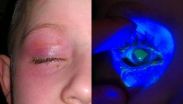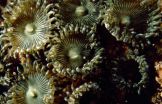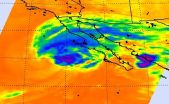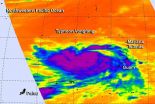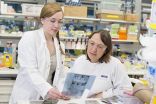(Press-News.org) San Francisco, CA, October 7, 2014 – Liquid laundry and dishwasher detergent pods are an emerging source of chemical exposure in children. When squeezed or bitten into, these pods can burst and send detergent into the mouth, nose, and eyes. A new report published in the current issue of the Journal of the American Association for Pediatric Ophthalmology and Strabismus (AAPOS) cautions that these products should be kept away from children because the bursting detergent pods can cause significant corneal injury.
Detergent pods may offer a simpler way to do laundry, but they represent a source of potential danger when in the hands of a young child. Available in the European market for over a decade and first introduced to the American market in 2010, liquid detergent pods are brightly colored, which makes them attractive to young children who mistake them for toys.
Michael E. Gray, MD, and Constance E. West, MD, from the Abrahamson Pediatric Eye Institute at Cincinnati Children's Hospital Medical Center, began tracking ocular injuries from detergent pods after noticing an increase in patients over the course of several months beginning in 2012. Ten children, all under 4 years of age, were treated for eye injuries stemming from burst detergent pods. Over the same time frame, 21 other children were seen in the emergency room for injuries caused by ingestion of the detergent contained in the pods.
For the children with eye injuries, two cases involved the child biting down on the pod, seven cases resulted from children squeezing the pod in their hands, and in the last case, the cause was unknown. All ten children with eye injuries presented with significantly bloodshot eyes, although no limbal ischemia or clinically significant conjunctival chemosis was found. Corneal abrasions were found in all of the cases, with defect sizes ranging from 3 mm in diameter to a nearly complete corneal epithelial defect. In addition, three children also had mild periorbital edema or erythema ipsilateral to the corneal abrasion.
During ophthalmologic examination, the ocular surface pH was measured and found to be neutral in all cases, but as study co-author Dr. Gray, Pediatric Ophthalmologist and Assistant Professor, Division of Pediatric Ophthalmology at Cincinnati Children's and UC Department of Ophthalmology, points out, the pH levels among different brands can vary. "Alkaline injury should also be suspected in association with the ocular cases. However, reported pH from Material Safety Data Sheets (MSDS) of different brands of pods is variable. The pH of some brand name pods is close to neutral (6.8 – 7.6), whereas other brands are considerably alkaline (8.0 – 11.0)."
The report also explains that because these pods are designed to be concentrated, they often contain higher levels of surfactants than traditional detergent, making them more likely to cause injury when they are ingested or when the chemicals enter the eye.
In the study, all affected subjects were treated with irrigation and topical antibiotic ointment. The recovery period for the children averaged just under four days, and none of the patients experienced additional complications or relapse.
While makers of these detergent pods have made changes to packaging to try to keep children out, not all brands adhere to the same safety standards. "Manufacturers have taken steps to prevent such injuries, such as warning labels and container lid safety features," states Dr. West, Pediatric Ophthalmologist and Associate Professor, Cincinnati Children's and UC Department of Ophthalmology. "These safety features are not always present, however, particularly with off-brand or generic laundry pods that might be sold at discount stores."
As convenient as detergent pods may be, families with young children need to take safety precautions. As Dr. Gray concludes, "This consecutive case series highlights the risk of ocular injuries from laundry detergent pods in the United States. Parents or caregivers must be aware of the potential for ocular injury from these pods and prevent access to these chemicals by young children."
INFORMATION:
Studying rats as model subjects, scientists found that adolescents were at an increased risk of suffering negative health effects from sugar-sweetened beverage consumption.
Adolescent rats that freely consumed large quantities of liquid solutions containing sugar or high-fructose corn syrup (HFCS) in concentrations comparable to popular sugar-sweetened beverages experienced memory problems and brain inflammation, and became pre-diabetic, according to a new study from USC. Neither adult rats fed the sugary drinks nor adolescent rats who did not consume sugar had the same ...
Research on zoantharians, a group of animals related to corals and anemones, by researchers James Reimer of the University of the Ryukyus in Okinawa, Japan, Angelo Poliseno of Universita Politecnica delle Marche in Italy, and Bert Hoeksema from Naturalis Biodiversity Center, Netherlands, has demonstrated how little we know about marine diversity in the so-called "center of marine biodiversity" located in the central Indo-Pacific Ocean. The study was published in the open access journal ZooKeys.
The researchers utilized previously collected specimens from Indonesia, ...
Philadelphia, PA, October 6, 2014 – Sandwiches make up a substantial part of the American diet and are a significant contributor to daily energy and sodium intake. By closely analyzing data from the federal nationwide dietary intake survey known as "What We Eat in America NHANES 2009-2010," a team of Department of Agriculture (USDA) researchers found that on any given day 49 percent of U.S. adults eat at least one sandwich, and sandwiches account for one-fifth of total daily sodium intake. The study was conducted by USDA Agricultural Research Service (ARS) investigators ...
Infrared satellite imagery from NASA's Aqua satellite shows what looks like an arm from Tropical Storm Simon's northern quadrant, reaching over Baja California to mainland Mexico. Forecasters at the National Hurricane Center noted that Simon is just an "arm's reach" to the southern U.S. and expect rainfall and rough surf to affect that area of the country.
On Oct. 6 at 0347 UTC (Oct. 5 at 11:47 p.m. EDT) the Atmospheric Infrared Sounder called AIRS that flies aboard NASA's Aqua satellite captured cloud top temperature data on Simon. On band of thunderstorms wrapping into ...
Over the weekend of Oct. 5 and 6, Typhoon Phanfone's center made landfall just south of Tokyo and passed over the city before exiting back into the Northwestern Pacific Ocean. NASA's Aqua satellite captured a picture of the typhoon as Tokyo braced for its large eye.
On its way to mainland Japan, Phanfone struck Kadena Air Base on the island of Okinawa. According to the website for U.S. Air Force Kadena Air Base, "One Airman is confirmed deceased and two more are missing after they were washed out to sea from the northwest coast of Okinawa at about 3:45 p.m. Oct. 5. An ...
Typhoon Vongfong has exited the Mariana Islands. Now, as the island of Iwo To begins recovery from Typhoon Phanfone, NASA's Aqua satellite is eyeing Typhoon Vongfong over 1,000 miles south of Iwo To. Although Vongfong is expected to turn north toward Iwo To, it is forecast to stay west of the island on its track.
On Oct. 6 at 0347 UTC (Oct. 5 at 11:47 p.m. EDT) the Atmospheric Infrared Sounder called AIRS that flies aboard NASA's Aqua satellite captured cloud top temperature data on Vongfong. AIRS data showed strongest thunderstorms within the typhoon circled the center ...
The XMASS collaboration, led by Yoichiro Suzuki at the Kavli IPMU, has reported its latest results on the search for warm dark matter. Their results rule out the possibility that super-weakly interacting massive bosonic particles (bosonic super-WIMPs) constitute all dark matter in the universe. This result was published in the September 19th issue of the Physical Review Letters as an Editors' Suggestion.
The universe is considered to be filled with dark matter, which cannot be observed by ordinary light. Although much evidence supports the existence of dark matter, it ...
Researchers at UC San Francisco have found that a nurse-led intervention program designed to reduce readmissions among ethnically and linguistically diverse older patients did not improve 30-day hospital readmission rates. Their findings suggest hospitals evaluate such programs before implementing or continuing.
Their study is in the Oct. 7 issue of Annals of Internal Medicine.
"The lack of effect in this population, which was well connected to primary care, suggests reducing readmissions is challenging," said co-lead author L. Elizabeth Goldman, MD, MCR, associate ...
Native American ancestry is associated with a lower asthma risk, but African ancestry is associated with a higher risk, according to the largest-ever study of how genetic variation influences asthma risk in Latinos, in whom both African and Native American ancestry is common. The study, led by UC San Francisco researchers, was published online October 6, 2014 in the Journal of Allergy and Clinical Immunology.
Although differences in the environments in which people live often are suspected when asthma risks among populations differ, the new findings illustrate the importance ...
Walter and Eliza Hall Institute scientists have discovered a small molecule that blocks a form of cell death that triggers inflammation, opening the door for potential new treatments for inflammatory disease such as rheumatoid arthritis, Crohn's disease and psoriasis.
The researchers made the discovery while investigating how a protein called MLKL kills cells in a process known as necroptosis. Their findings were published today in the journal Proceedings of the National Academy of Sciences.
Necroptosis is a recently discovered cell death pathway linked to immune disorders. ...
